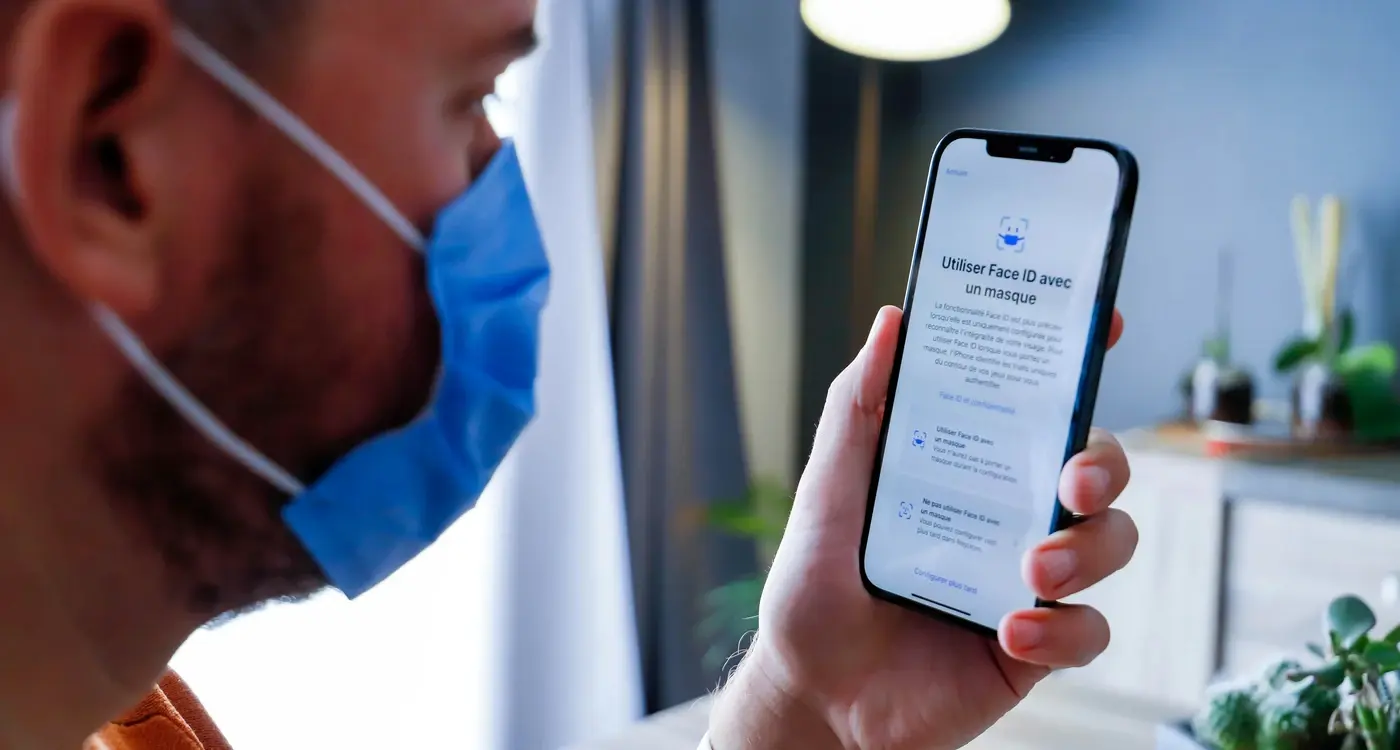The Hidden Costs of Healthcare App Development Nobody Talks About
Building a medical app seems straightforward enough until you see the final bill. Most healthcare startups budget around £50,000 to £150,000 for their app development, but the budget reality often doubles or triples that figure once all the hidden expenses surface. I've watched countless clients' faces drop when they realise their initial quote was just the tip of the iceberg.
The problem isn't that agencies are trying to trick you—it's that healthcare apps come with layers of complexity that simply don't exist in other industries. Every medical app needs to jump through regulatory hoops, meet strict security standards, and integrate with existing healthcare systems that were built decades ago. These aren't optional extras; they're mandatory requirements that can make or break your project.
The real cost of healthcare app development isn't in the code—it's in everything else you need to make that code legally and safely deployable
What makes this particularly frustrating is that many of these costs only become apparent once you're already committed to the project. You've signed contracts, assembled teams, and promised investors a launch date. That's when the hidden expenses start appearing, one after another, turning your carefully planned budget into a financial nightmare.
The Compliance Maze That Drains Your Budget
Right, let's talk about the elephant in the room—healthcare compliance. I've watched countless clients' eyes glaze over when we start discussing GDPR, Data Protection Act 2018, and medical device regulations. But here's the thing: ignoring these requirements doesn't make them disappear, it just makes your bill bigger later.
Healthcare apps aren't like your average social media app where you can move fast and break things. Every feature needs to be documented, every data flow mapped, and every user interaction logged properly. The paperwork alone can add weeks to your development timeline, and that's before we even start coding.
The Main Compliance Costs You'll Face
- Legal reviews for every app update and feature release
- Data protection impact assessments that require specialist consultants
- Regular compliance audits throughout development
- Documentation creation and maintenance for regulatory bodies
- Staff training on healthcare-specific development practices
What really catches people off guard is how compliance affects your development speed. Simple changes that would take a day in a regular app can stretch to weeks when you factor in approval processes and documentation updates. I've seen projects where compliance work represented 30% of the total development budget—money that many founders simply hadn't planned for.
Security Requirements That Keep Adding Up
When you're planning your medical app budget, security costs have this sneaky habit of multiplying faster than you'd expect. What starts as a basic encryption requirement soon becomes a full-blown security fortress that would make Fort Knox jealous. I've watched countless clients get blindsided by these hidden expenses because they thought security was just a box to tick rather than an ongoing investment.
The budget reality hits hard when you realise that healthcare data protection isn't just about keeping hackers out—it's about creating multiple layers of defence that all need regular updates and monitoring. Your initial security estimate might cover basic SSL certificates and password protection, but that's barely scratching the surface of what's actually needed for a HIPAA compliant app.
The Security Layers You Didn't Know You Needed
Here's what typically gets added to your security bill as development progresses:
- Multi-factor authentication systems that require specialist integration
- End-to-end encryption for all data transmissions
- Regular penetration testing by certified security professionals
- Secure cloud storage with healthcare-grade protection
- Audit trail systems that log every single user action
- Backup and disaster recovery systems with encrypted storage
Each of these components comes with its own price tag and ongoing maintenance costs. The worst part? You can't really skimp on any of them without putting your entire project at risk.
Budget at least 30% more than your initial security estimate—most medical apps end up needing additional security measures once development begins and real-world testing reveals vulnerabilities.
Testing Costs Nobody Mentions Upfront
Here's something that catches most people off guard—healthcare apps need way more testing than your average mobile app. I mean, we're talking about patient data and medical decisions here, so you can't just push an update and hope for the best!
The testing phase alone can eat up 30-40% of your mobile app development costs, and that's before you factor in the specialised testing requirements. You'll need security penetration testing, HIPAA compliance audits, and usability testing with actual healthcare professionals. Each of these requires different expertise and—you guessed it—different price tags.
Types of Testing You'll Need
- Functional testing across multiple devices and operating systems
- Security vulnerability assessments and penetration testing
- Performance testing under high user loads
- Accessibility testing for users with disabilities
- Clinical workflow validation with medical staff
- Integration testing with existing hospital systems
Then there's the reality that healthcare apps often need multiple rounds of testing. Find a security flaw? Back to testing. Need to integrate with a new hospital system? More testing. Want to add a new feature? You guessed it—the whole testing cycle starts again.
What really stings is that you can't cut corners here. Unlike other industries where you might launch with minor bugs and patch them later, healthcare app development requires apps to work perfectly from day one. Patient safety depends on it.
Integration Expenses With Existing Systems
Here's something that catches healthcare organisations off guard every single time—getting your shiny new medical app to talk to existing systems is like trying to get two people speaking different languages to have a conversation. And it's expensive. Really expensive.
Most hospitals and clinics already have patient management systems, billing software, and electronic health records that have been running for years. Your new app needs to connect with all of these, but here's the thing—these systems weren't designed to play nicely together. Each one speaks its own technical language, which means you'll need custom connectors, data mapping, and sometimes complete system overhauls.
The Reality Behind System Integration
I've worked on medical app projects where the integration costs ended up being triple the original app development budget. Triple! That's not a typo. The problem is that older healthcare systems use outdated technology that requires specialist knowledge to work with—and specialists don't come cheap.
We thought connecting to our existing patient database would be straightforward, but six months and £80,000 later, we're still working on it
Then there's data migration—moving existing patient records and information into formats your new app can understand. This process alone can take months of careful planning and testing to make sure nothing gets lost or corrupted. Trust me, you don't want to be the person who accidentally deleted years of patient history!
Ongoing Maintenance That Never Ends
Here's something that catches many healthcare organisations off guard—the maintenance costs for your app don't just continue after launch, they actually increase over time. I've watched clients' faces drop when they realise their shiny new healthcare app is going to need constant attention, updates, and fixes for as long as it exists.
Healthcare apps face unique maintenance challenges that regular consumer apps simply don't have to deal with. Medical regulations change frequently, which means your app needs updating to stay compliant. Security patches can't wait—they need immediate attention because patient data is at stake. Plus, healthcare systems are constantly evolving, so your integrations break more often than you'd expect.
What Your Maintenance Budget Actually Covers
- Regular security updates and vulnerability patches
- Compliance updates when regulations change
- Performance monitoring and server maintenance
- Bug fixes and user experience improvements
- Third-party integration updates
- Operating system compatibility updates
Most healthcare apps require around 15-20% of their original development cost annually just for basic maintenance. That's before you add new features or make major updates. The reality is that maintenance isn't optional—it's the price of keeping your app functional, secure, and legally compliant in the healthcare space.
User Training and Support Hidden Costs
Here's something that catches most people off guard—once your medical app is built, you're not done spending money. Your users will need help figuring out how to use it, and trust me, they'll need more help than you think they will.
Healthcare workers are busy people; they don't have time to work out complicated interfaces or hunt through menus looking for basic functions. When your app doesn't work the way they expect, they'll contact your support team. And that support team? It needs to understand both your app and healthcare workflows well enough to actually help.
Training Materials and Documentation
You'll need to create user manuals, video tutorials, and step-by-step guides for different user types. Doctors use apps differently than nurses, who use them differently than administrators. Each group needs tailored training materials, and updating these every time you release new features adds up quickly.
Ongoing Support Infrastructure
Setting up a proper support system means hiring people who understand healthcare terminology and your app's technical details. You can't just hand this off to a generic call centre—when someone calls about patient data not syncing correctly, your support team needs to know exactly what questions to ask and how to solve the problem fast.
Budget for at least 15-20% of your development costs annually for user support and training materials. Healthcare apps typically generate 3x more support requests than consumer apps.
Legal and Insurance Surprises
Here's something that catches most people off guard—your regular business insurance probably won't cover healthcare app development. I've watched clients' faces drop when they discover their existing policies have massive gaps when it comes to handling patient data and medical information.
Professional indemnity insurance becomes a whole different beast when you're dealing with healthcare apps. We're talking about potential claims that could reach millions if something goes wrong with patient care or data breaches occur. The premiums reflect this risk, and they're not cheap.
Legal Documentation That Piles Up
Then there's the legal paperwork—and there's loads of it. Patient consent forms, data processing agreements, liability waivers, terms of service that actually hold up in court. Each document needs proper legal review, and healthcare lawyers charge accordingly.
Don't forget about international considerations either. If your app might be used across borders, you're looking at multiple jurisdictions and different legal requirements. What works in the UK might not fly in the EU or US, and sorting that out isn't a quick conversation with your regular solicitor.
The real kicker? These costs often surface late in the development process when you're already committed and budgets are stretched. Smart developers factor in at least 10-15% of their total budget for legal and insurance surprises—trust me, you'll need it.
Conclusion
After eight years of building healthcare apps, I can tell you that the budget reality for medical app development is far more complex than most people expect. Those hidden expenses we've covered—from compliance headaches to never-ending maintenance costs—aren't just theoretical numbers on a spreadsheet. They're real costs that can make or break your project.
The truth is, most healthcare organisations budget for the obvious stuff: design, development, maybe some testing. But they completely miss the ongoing legal fees, the security audits that happen every few months, the integration work that takes three times longer than anyone predicted. I've seen perfectly good medical app projects fail not because the idea was bad, but because the money ran out when these hidden costs started piling up.
Here's what I'd recommend: take your initial budget estimate and add at least 40% for these hidden expenses. That might sound scary, but it's much better than running out of money halfway through development. Your medical app can genuinely help people and transform healthcare—just make sure you're financially prepared for the real journey ahead, not the simplified version everyone talks about.
Share this
Subscribe To Our Blog
You May Also Like
These Related Stories

Building Your First Healthcare App: A Founder's Reality Check

Mobile Health App Development: Navigating the Clinical-Technical Divide





